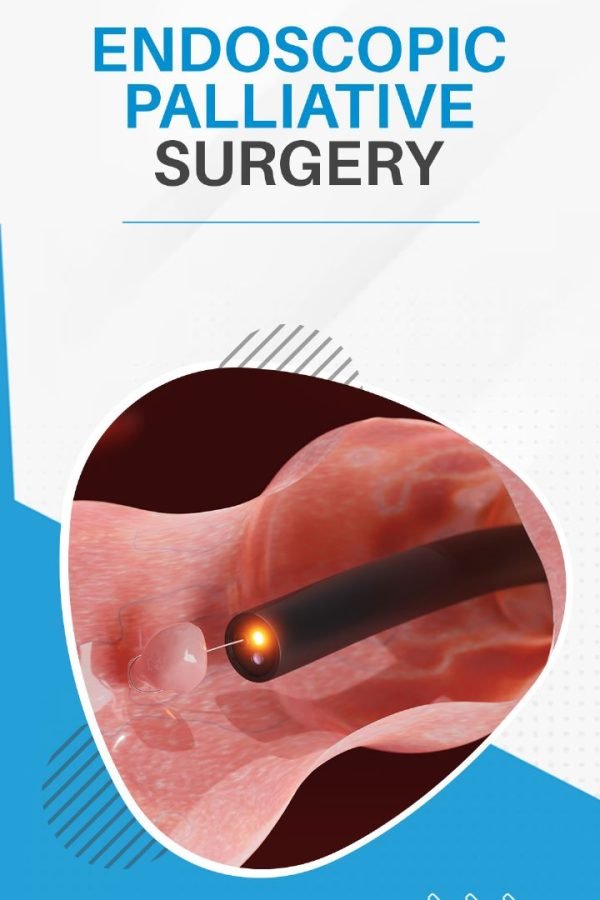- Abdominal Hernia Surgery in Dombivli
- Anal Fissure Laser Surgery in Dombivli
- Appendix Treatment in Dombivli
- Bariatric Surgery in Dombivli
- Best Laparoscopic Surgeon in Dombivli
- Blogs
- Cases Operated
- Colorectal Cancer Treatment in Dombivli
- Contact us
- Custom
- Dr Rahul Mahadar
- Dr. Dhanashree Mahadar
- Endoscopy Clinic in Dombivli
- Ent Surgeon in Dombivli
- Gall Bladder Cancer Surgery in Dombivli
- Gallbladder Stone Treatment in Dombivli
- Gastrointestinal Surgeon in Dombivli
- Hernia Surgeon in Dombivli
- Home
- Laser Fistula Surgery in Dombivli
- Laser Piles Surgeon in Dombivli
- Pancreatic Cancer Treatment in Dombivli
- Services
- Specialities
- Stomach Cancer Treatment in Dombivli
- Testimonials
- Video


The main goal of Endoscopic Palliative procedure is to improve patient’s quality of life and make patient more comfortable. Doctor performs Endoscopic Palliative procedures to prevent or relieve symptoms instead of trying to cure the cancer.
- Cancer has spread and
- Cancer cannot be completely removed by surgery.
AGI surgeon can perform an endoscopic bypass procedure to restore normal flow if blockage cannot be opened with a stent. If the tumor is blocking the bile duct then a biliary bypass can reroute the flow of bile around the tumor to relieve pain. If the tumor is blocking the duodenum, a Gastrojejunostomy or gastric bypass is performed to enable food to pass from the stomach around the tumor and through the rest of the digestive system. Endoscopic surgical bypass procedure is performed under local anesthesia and by using minimally invasive surgical technique.
Endoscopic ultrasound- guided radiofrequency ablation is rapidly becoming as most effective treatment for patients suffering from pancreatic (stomach) tumors. This advanced technique is mainly used in patients who are not suitable to undergo surgery. Endoscopic Tumor Ablation is done to stop bleeding or to relieve a tumor blockage in people with advanced stomach cancer. This procedure helps patient to eat food more easily.
A stent is a hollow metal or plastic tube. Stents are used if a tumor is blocking the opening of the stomach near the esophagus. It helps patients with advanced stomach cancer to swallow food more easily. A stent can be placed at the opening to the duodenum which allows the food to pass from the stomach into the small intestine. Doctor places the stent by using an endoscope.
Some stomach cancer patients are unable to eat or drink enough food to get adequate nutrition. In such case, a minor surgery is done to place a feeding tube through the skin of the abdomen and into the distal part of the stomach or into the small intestine. A feeding tube can also be used for a shorter time period after stomach cancer surgery. Liquid nutrition is then put directly into the tube to maintain healthy body weight. A tube feeding into the stomach is a called as a Gastrostomy Tube or G-tube while a tube feeding into the intestines is a Gastrojejunostomy Tube or GJ-tube.
A bowel obstruction occurs when the small intestine or colon is partly or completely blocked due to tumor. The most common cancers that cause bowel obstructions are cancers of the colon, stomach and ovary. This blockage prevents food, fluids and gas from passing through the intestines normally. If patient has bowel obstruction then laparoscopic GI cancer surgery is needed to remove or bypass the part of the intestine that is blocked. There are various types of surgeries for bowel obstruction such as surgical resection, stent placement, removal of adhesions, colostomy and revascularization. GI surgeons perform bowel obstruction surgeries by using minimally invasive surgical techniques.

